
Por Julia Hammond, para The Discoverer
Si te consideras el tipo de viajero al que le gusta buscar gemas escondidas y destinos subestimados, la idea de visitar un punto turístico puede llenarte de horror. Caros y abarrotados, a menudo representan lo peor de la industria turística. Pero hay una razón por la que estos lugares son tan populares y, en algunos casos, perderlos realmente es perdérselos. Aquí hay diez “trampas para turistas” en todo el mundo que realmente vale la pena visitar.
Cataratas del Niágara
Las Cataratas del Niágara son una de las principales cascadas más accesibles del mundo. Los críticos dicen que sus caminos, túneles y miradores (sin mencionar el espectáculo de luces nocturno) restan valor a su belleza natural. Sin embargo, ver un volumen tan grande de agua cayendo en cascada realmente merece la palabra impresionante. En promedio, 3160 toneladas de agua fluyen sobre las Cataratas del Niágara cada segundo, cayendo a una velocidad de 32 pies por segundo. Ya sea que camines detrás de la cortina de agua o sientas el rocío al acercarte en el icónico recorrido en barco Maid of the Mist, es imposible no quedar impresionado por este magnífico relieve.

Stonehenge, Inglaterra
Stonehenge figura en muchas listas de deseos de los visitantes interesados en salir de Londres y ver un poco de la campiña inglesa. Pero visitar este sitio del Patrimonio Inglés, a pesar de su valor como antiguo paisaje ceremonial, puede resultar decepcionante. Aún así, es difícil descartar un círculo de piedra prehistórico que comprende sarsens y piedras azules únicas, particularmente uno cuyo propósito y método de construcción originales han sido objeto de tantas discusiones. Si viaja con un presupuesto limitado, sepa que los caminantes pueden seguir un camino permisivo para acercarse a las piedras verticales sin tener que pagar la costosa tarifa de entrada. Haga que el viaje fuera de la ciudad valga la pena visitando también algunos sitios cercanos, como los antiguos sitios ceremoniales de Avebury.
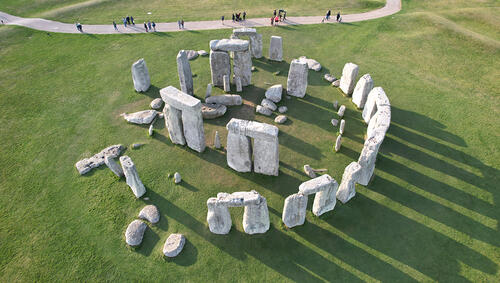
The Long Bar, Singapur
Necesitarás mucho dinero si quieres poder decirles a tus amigos que has bebido un Singapore Sling en el Long Bar del Raffles Hotel. Este icónico cóctel rosado se inventó aquí en 1915 y luego se adoptó como la bebida nacional de Singapur. Es una mezcla de ginebra, Bénédictine, licor de cereza, curaçao, jugos de frutas y jarabe de granadina que le da ese color distintivo. En un entorno exclusivo, los camareros invitan a los clientes a mordisquear maní mientras beben. Es tradicional barrer las conchas de la barra y tirarlas al suelo, algo inusual en un país que normalmente es tan anti-basura. Un vaso te costará unos deslumbrantes 39 dólares de Singapur (alrededor de 28 dólares estadounidenses). A pesar del gasto, sigue siendo una experiencia por excelencia, así que ahorre espacio en el presupuesto para al menos una.
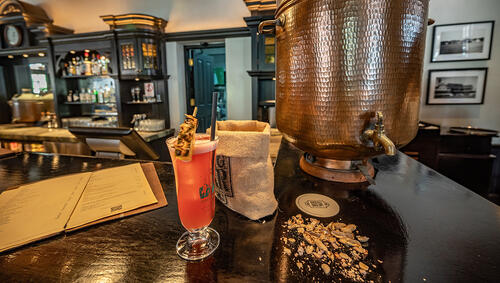
The Blue Lagoon, Islandia
Cuando la Laguna Azul se inauguró por primera vez en 1992, fue aclamada como una forma innovadora de garantizar que el excedente de agua caliente de la planta hidroeléctrica cercana no se desperdiciara. Con el paso de los años, las instalaciones se han ido ampliando y mejorando; Hoy en día, este lujoso (y costoso) spa está muy lejos de la laguna geotérmica original. Incluso en pleno invierno, no tendrás el agua cálida y azul lechosa para ti solo. El número de visitantes a Islandia ha aumentado dramáticamente en los últimos años, generando una serie de baños geotérmicos de alta gama para visitar. Pero si bien algunos viajeros pueden ensalzar las virtudes de estos competidores, la Laguna Azul logra mantenerse firme y sigue siendo una visita obligada para cualquiera que se dirija a Islandia.
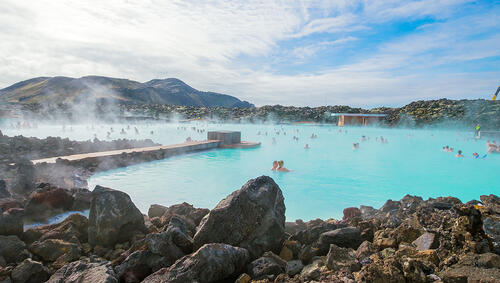
Temple Bar, Dublín
El distrito Temple Bar de Dublín es un foco para los visitantes interesados en experimentar la diversión legendaria de Irlanda en una noche de fiesta. Pero aunque el lugar está muy animado, la clientela que frecuenta sus pubs suele estar compuesta por otros extranjeros, con precios exorbitantes. Pero hay algo en el pub homónimo, con su llamativo color rojo y su larga historia, que resulta irresistible. Tal vez sea la afirmación de tener la mayor selección de whiskies de Irlanda lo que lo hace (más de 350), o simplemente el anhelo de tomar una pinta de Guinness mientras escuchas música pegadiza en vivo.
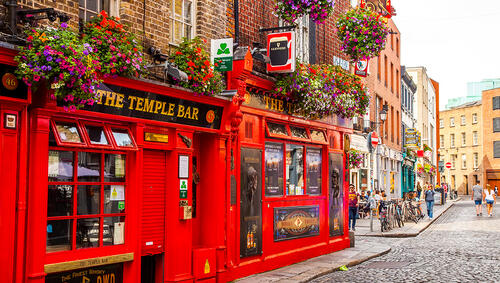
La Rambla, Barcelona
La Rambla es una amplia avenida arbolada diseñada en 1766. Discurriendo perpendicular a la costa desde la Plaça de Catalunya y dividida en seis secciones, ha cambiado mucho a lo largo de los años; Los vendedores de flores que solían ejercer su oficio a lo largo de La Rambla de Sant Josep hace tiempo que desaparecieron y hoy en día suele estar lleno de turistas. Estatuas humanas, caricaturistas y vendedores ambulantes distraen a quienes deambulan, lo que convierte a este lugar en un lugar privilegiado para los carteristas. Si te sumerges en sus museos de mal gusto o en sus restaurantes caros, es muy poco probable que escuches el acento local. ¿Entonces, para qué molestarse? Para empezar, esta calle es una ruta conveniente hacia algunos de los barrios más atractivos de la ciudad, como el Barri Gòtic (Barrio Gótico), mientras que sus palmeras y sus pisos de mosaico siguen siendo una hermosa vista, a pesar de las multitudes. Sólo mantén firme tu bolso.
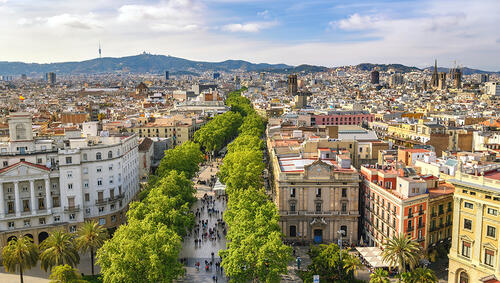
La torre inclinada de Pisa
Algunos visitantes de Italia descartan la Torre Inclinada de Pisa como nada más que una trampa para turistas. A primera vista, no es difícil ver por qué: hordas de visitantes posan para la misma fotografía cliché mientras apuntalan el fracaso de ingeniería más notorio de la historia. Muchos simplemente toman la foto y se van, ansiosos por salir y ver más tesoros de la Toscana. Sin embargo, vale la pena comprar un boleto para subir los 251 escalones que forman la escalera de caracol que conduce a la cima de la torre. Sus escalones inclinados se han desgastado a lo largo de los siglos y se han inclinado tan dramáticamente como la estructura misma, lo que hace de este un ascenso único. En la cima, podrás ver de cerca las campanas del Campanile y disfrutar de una vista aérea de esta pintoresca ciudad universitaria.
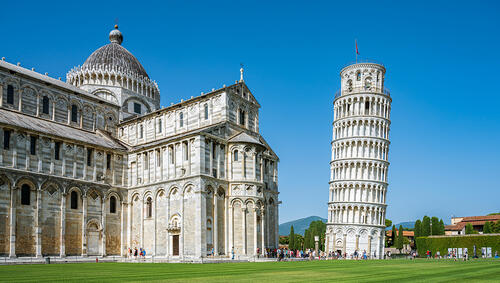
English Version
7 Tourist Traps That Are Actually Worth Visiting – By Julia Hammond, The Discoverer
If you consider yourself the kind of traveler who likes to seek out hidden gems and underrated destinations, the idea of visiting a tourist hotspot might fill you with horror. Expensive and overcrowded, they often represent the worst of the tourist industry. But there’s a reason why these places are so popular, and in some cases, to miss them really is to miss out. Here are ten “tourist traps” around the world that are actually worth visiting.
Niagara Falls
Niagara Falls is one of the most accesible major waterfalls in the world. Critics say its paths, tunnels and overlooks – not to mention the evening light show – detract from its natural beauty. However, the sight of such a huge volume of water cascading down is truly deserving of the word awesome. On average, 3160 tons of water flow over Niagara Falls every second, falling at a rate of 32 feet per second. Whether you walk behind the curtain of water or feel the spray as you approach on the iconic Maid of the Mist boat tour, it’s impossible not to be impressed by this magnificent landform.
Stonehenge, England
Stonehenge features on many wish lists for visitors keen to get out of London and see a bit of the English countryside. But visiting this English Heritage site, despite its value as an ancient ceremonial landscape, can be underwhelming. Still, it’s hard to write off a prehistoric stone circle that comprises unique sarsens and bluestones, particularly one whose original purpose and method of construction has been the subject of so many discussions. If you’re traveling on a budget, know that walkers can follow a permissive path to get close to the standing stones without having to shell out for the expensive admission fee. Make the trip out of the city extra worthwhile by stopping through a few nearby sites, as well, like the ancient ceremonial sites at Avebury.
The Long Bar, Singapore
You’ll need deep pockets if you want to be able to tell your friends you’ve sipped a Singapore Sling in the Long Bar at Raffles Hotel. This iconic pink cocktail was invented here in 1915 and later adopted as Singapore’s national drink. It’s a blend of gin, Bénédictine, cherry liqueur, curaçao, fruit juices and the grenadine syrup which gives it that distinctive color. In upscale surroundings, bartenders invite customers to nibble on peanuts as they drink. It’s traditional to sweep the shells off the bar onto the floor, an unusual thing in a country that’s normally so anti-litter. A glass will set you back an eye-watering 39 Singapore dollars (around US $28). Despite the expense, it remains a quintessential experience, so save room in the budget for at least one.
The Blue Lagoon, Iceland
When the Blue Lagoon first opened in 1992, it was hailed as an innovative way to ensure surplus warm water from the nearby hydroelectric plant wouldn’t go to waste. Over the years, the facilities have been expanded and improved; today, this luxurious – and expensive – spa is a far cry from the original geothermal lagoon. Even in the depths of winter, you won’t have the warm, milky blue water to yourself. The number of visitors to Iceland has increased dramatically in recent years, spawning a clutch of high-end geothermal baths to visit. But while some travelers might extol the virtues of these competitors, the Blue Lagoon manages to hold its own and remains a must-do for anyone bound for Iceland.
Temple Bar, Dublin
Dublin’s Temple Bar district is a focus for visitors keen to experience Ireland’s legendary craic on a night out. But although the place is buzzing, the clientele that frequent its pubs is often made up of other foreigners, with eye-wateringly high prices. But there’s something about its namesake pub with its striking red livery and long history, which proves irresistible. Maybe it’s the claim to having Ireland’s largest selection of whiskeys that does it (more than 350), or just a yearning for a pint of Guinness as you listen to some catchy live music.
La Rambla, Barcelona
La Rambla is a broad tree-lined avenue laid out in 1766. Running perpendicular to the coast from Plaça de Catalunya and split into six sections, it’s changed a lot over the years; the flower sellers who used to ply their trade along La Rambla de Sant Josep are long gone, and today it is often crowded with tourists. Human statues, caricaturists, and street vendors distract those who amble by, making this a prime location for pickpockets. Duck into its tacky museums or overpriced restaurants and you’re highly unlikely to hear a local accent. So why bother? For starters this street is a convenient route to some of the city’s most attractive neighborhoods, such as the Barri Gòtic (Gothic Quarter), while its palm trees and tiled mosaic floors remain a pretty sight, despite the crowds. Just keep a firm hold on your purse.
The Leaning Tower of Pisa
Some visitors to Italy dismiss the Leaning Tower of Pisa as nothing more than a tourist trap. On the face of it, it’s not hard to see why: hordes of visitors posing for the same clichéd photograph as they prop up history’s most notorious engineering fail. Many simply grab the shot and leave, keen to head off and see more of Tuscany’s treasures. However, it’s worth purchasing a ticket to climb the 251 steps that form the spiral staircase leading to the top of the tower. Its inclined steps have been worn smooth over the centuries and slant as dramatically as the structure itself, making this a unique ascent. At the top, you’ll get a close-up look at the bells of the Campanile and enjoy a bird’s eye view of this characterful university city.

